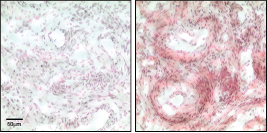Purified Anti-PtdIns(3)P monoclonal antibody.
Subclass: IgG2a
Source: Mouse
Applications: ELISA, Immunofluorescence, Alphascreen, Fluorescence Polarization
Phosphoinositides (PIPns) are minor components of cellular membranes but are integral signaling molecules for cellular communication. Phosphatidylinositol 3-phosphate (PI(3)P) is enriched in early endosomes having roles in endosome fusion and receptor sorting and internalization in multivesicular bodies. PI(3)P has also been found at the plasma membrane and is involved in the translocation of the glucose transport protein GLUT4.
Featured in Publications
1) Nobukuni, T., M. Joaquin, et al. (2005). “Amino acids mediate mTOR/raptor signaling through activation of class 3 phosphatidylinositol 3OH-kinase.” Proc Natl Acad Sci U S A 102(40): 14238-43.
2) Dowling, J. J., A. P. Vreede, et al. (2009). “Loss of myotubularin function results in T-tubule disorganization in zebrafish and human myotubular myopathy.” PLoS Genet 5(2): e1000372.
3) Zornetta, I., L. Brandi, et al. (2010). “Imaging the cell entry of the anthrax oedema and lethal toxins with fluorescent protein chimeras.” Cell Microbiol.12(10): 1435-45.
Product keywords: PtdIns(3)P, anti-PI(3)P, PI3P, IgG





